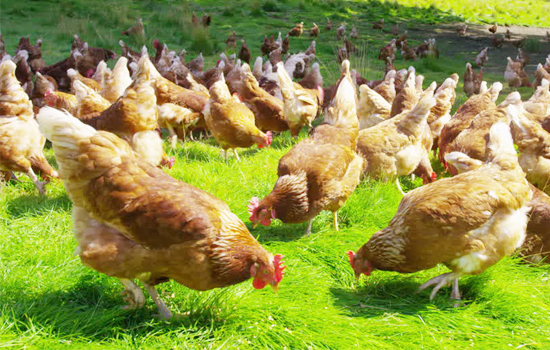What kind of feed is good for raising chickens with automatic chicken raising equipment?
- font size decrease font size increase font size
In the current chicken farming industry, the intensive farming mode is the trend of modern chicken farming. Therefore, many farmers are gradually using fully automatic chicken raising equipment for intensive chicken raising. Using all kinds of automatic chicken breeding equipment can provide a comfortable growing environment for chickens. Let the flock grow and produce in a safe and pollution-free environment. In addition, farmers choose the feed used by laying hens. It is possible to raise laying hens with higher yields. So what kind of feed is good for raising chickens? The automatic poultry equipment manufacturers will briefly introduce them.
The growth of laying hens living in the battery cage systems can be divided into: chicks, breeding period, laying period, mid laying period and late laying period. The main points of feed adjustment at each stage are:
- Chicks: Farmers generally refer to the 0-6 week old laying hens as the brooding period. The feed nutrients obtained are mainly used for the rapid growth of muscles and bones, but the digestive system is not well developed, the feed intake is small, and the muscles and bones are not well developed. The stomach has poor ability to grind feed, so chicks are nutritionally demanding, requiring high-energy, high-protein, low-fiber feed, supplemented with higher levels of minerals and vitamins. Raw materials such as corn, fish meal and soybean meal can be used when designing the formula.
- Breeding hens: 7-18 weeks old is the breeding period. At this stage, the chickens grow vigorously, the weight growth rate is relatively stable, the digestive organs gradually develop and mature, the bone growth rate exceeds the muscle growth rate, and nutrients such as energy and protein are needed. The demand for ingredients is relatively low, and some raw materials with high crude fiber such as bran, grass meal, etc. can be used to reduce the cost of feed. In order to limit body weight growth in the later stage of breeding, farmers can choose to use bran to dilute the nutrient concentration of the feed, and farmers from 18 weeks of age to the start of production can choose calcium raw materials with a relatively high concentration for feeding to speed up the reserve of bone calcium.
- Laying hens: The laying hens are in the laying period from 19 weeks of age to elimination. In the early stage of laying, the laying hens are generally at the age of 40 weeks after laying eggs or when the laying rate is from 5% to 70%. The requirement of crude protein for chickens increases with the increase of egg production rate. In addition, the formation of egg shells requires a large amount of calcium, so the demand for calcium increases. Nutrient indicators such as methionine, vitamins, and trace elements should also be appropriately increased to ensure adequate supply of nutrients, so as to ensure and prolong the peak laying period of laying hens, give full play to their production performance, and improve economic benefits for farmers. Use corn gluten meal and other fine feed ingredients to avoid affecting feeding.

In the mid-laying period, the laying hens are generally 40-60 weeks old or after the peak period when the laying rate is 80%-90%. The weight of laying hens at this stage generally does not increase. After the peak period, the laying rate of laying hens gradually increases. Decline, so the nutrition for the feed is lower than the peak. However, due to the increase in egg weight, farmers should not reduce the crude protein level in the feed too quickly, and should reduce the protein level slowly.
The late laying period is after 60 weeks of age or the laying rate drops below 70%, and the laying rate during this period continues to decline. Due to the increase of chicken age, the ability to digest and absorb nutrients in the feed decreases, and the quality of eggshells deteriorates. Therefore, farmers should appropriately increase the amount of mineral feed when adjusting the feed, which can improve the calcium level. In the later stage of egg production, with the decline of egg production, the energy requirements of laying hens are correspondingly reduced, and the energy level cannot be increased at will, so as not to make the chicken fatter and affect the production performance.
The above is the main points of feed adjustment for laying hens at different stages in the process of raising chickens and laying hens described by poultry equipment manufacturers. I hope the above descriptions can help all farmers, thank you for your attention.

